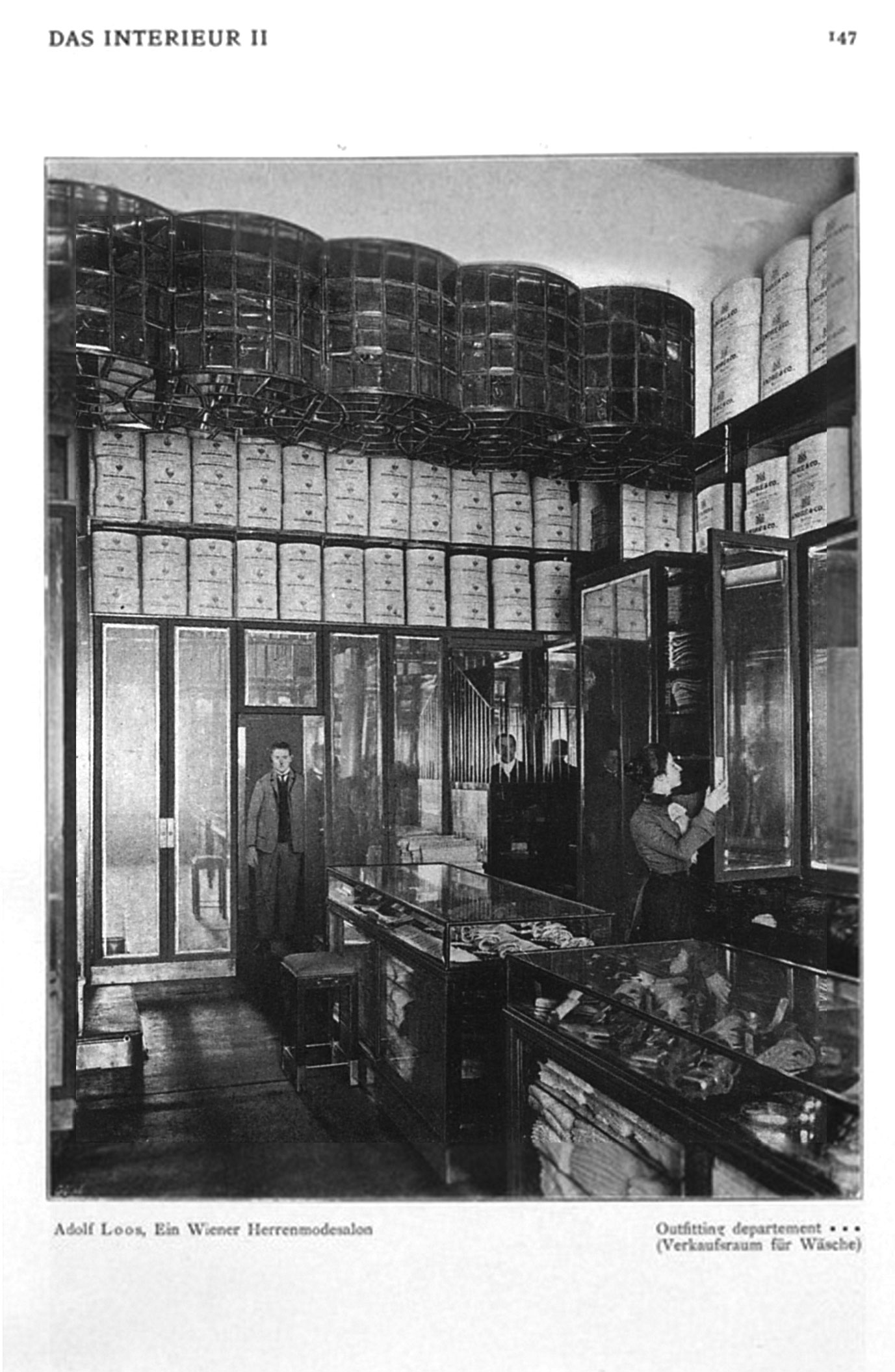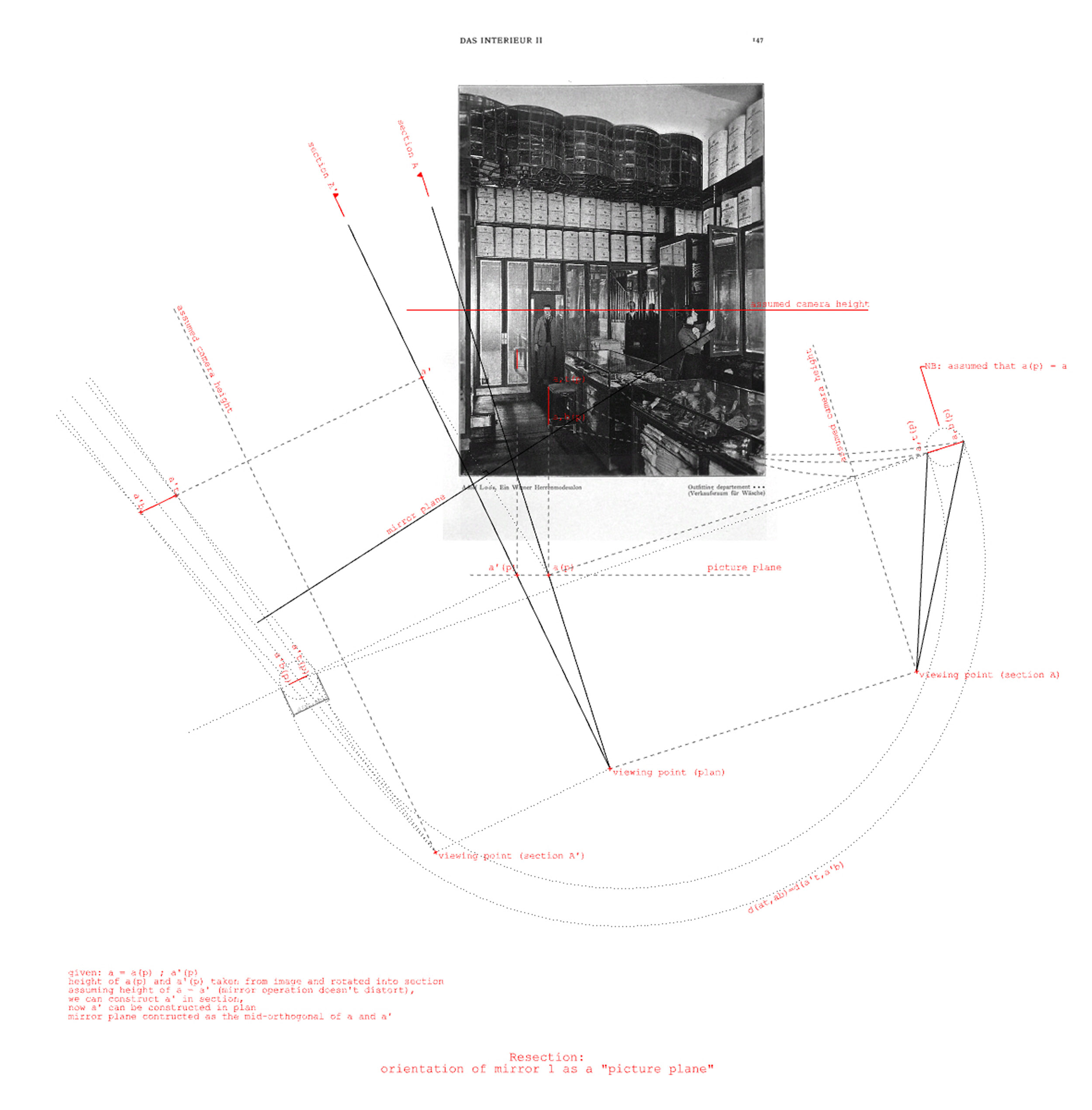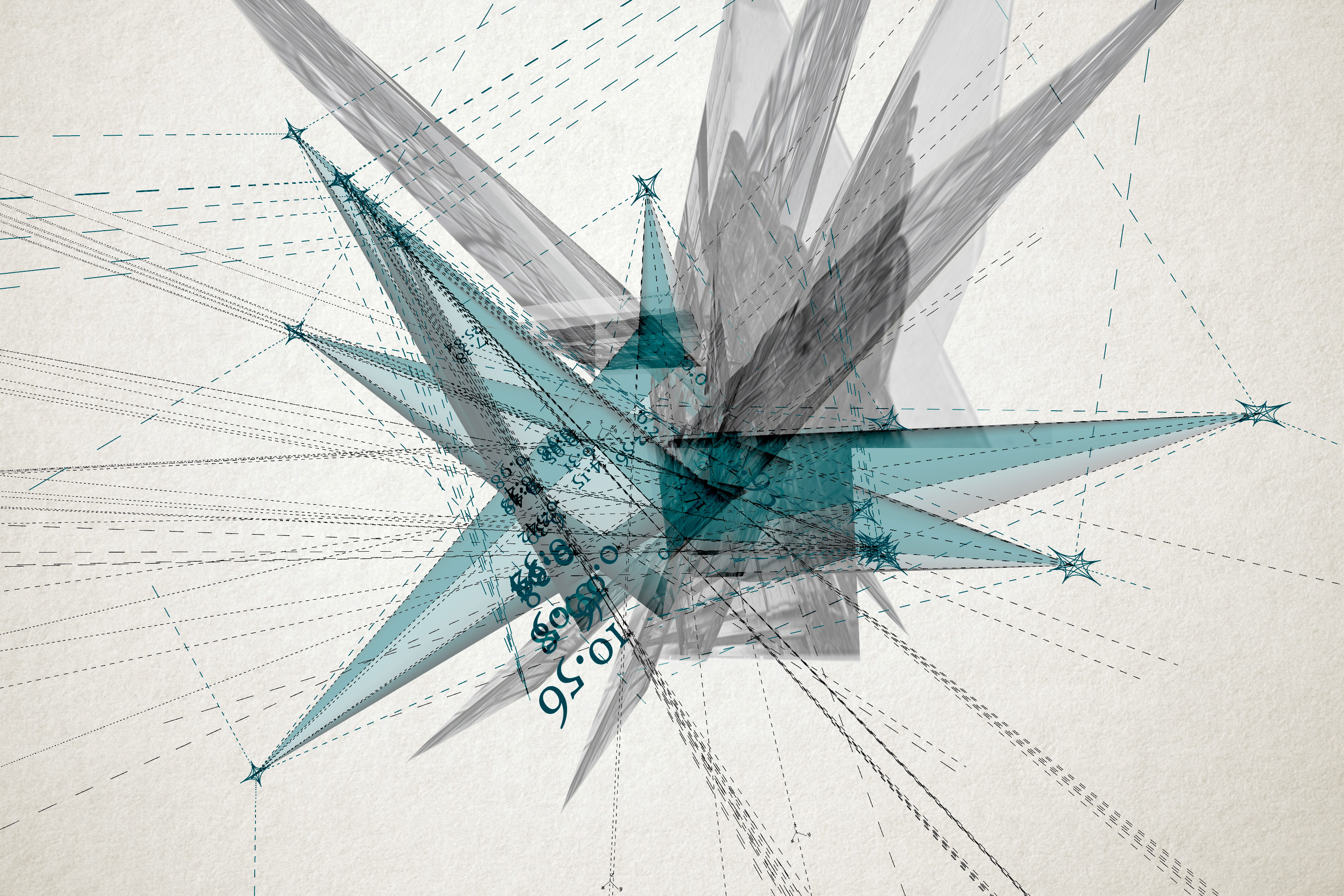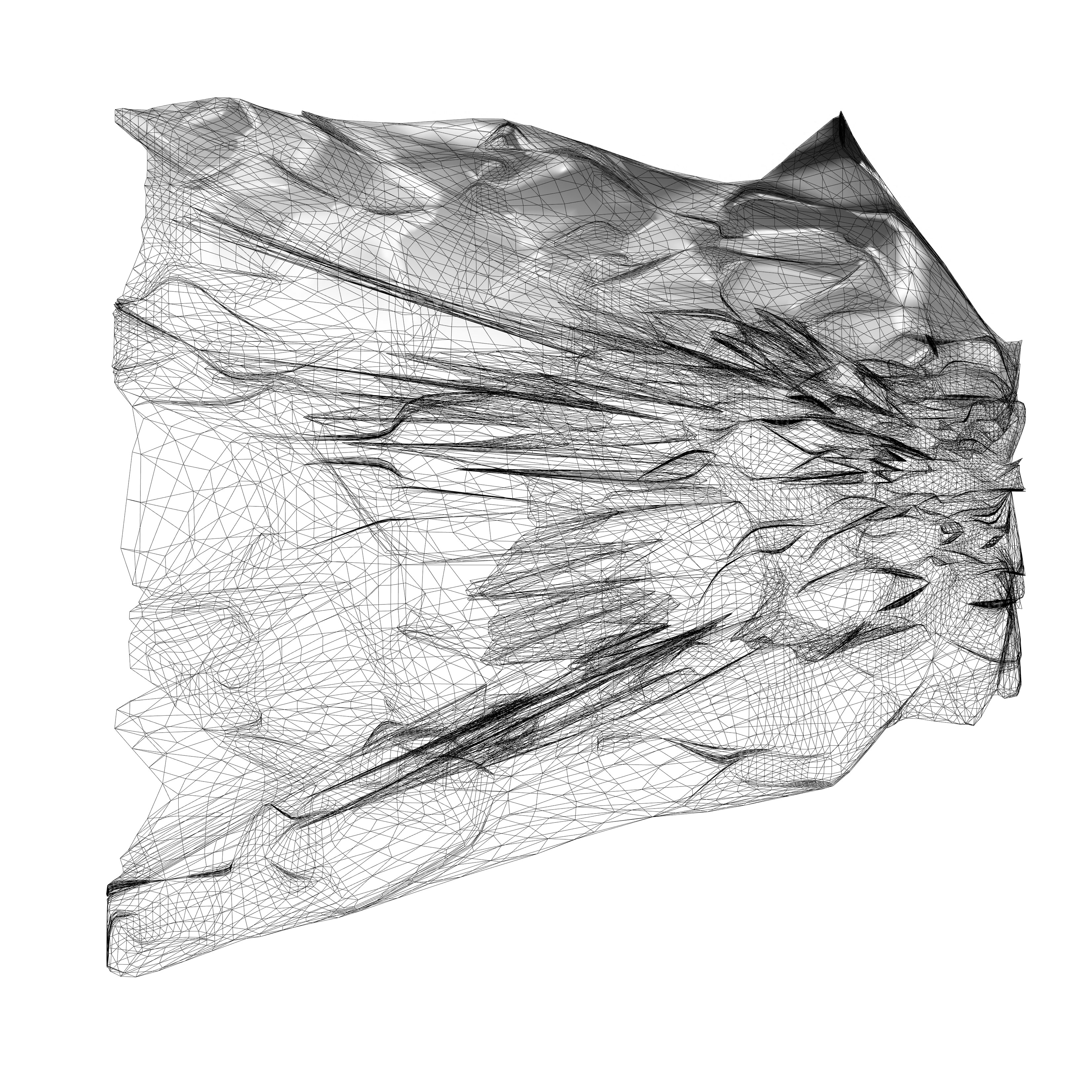Photogrammetric reconstruction of a destroyed Adolf Loos’ menswear shop, speculations on the inhabitation of its shadows
Published in ARENA Journal of Architectural Research:
Pearce, T. (2024) ‘Measuring Adolf Loos’ Parallax: Retroactive Photogrammetry and the Persistent Off-Screen’, ARENA Journal of Architectural Research, 9(1), p. 5.
Published in ARENA Journal of Architectural Research:
Pearce, T. (2024) ‘Measuring Adolf Loos’ Parallax: Retroactive Photogrammetry and the Persistent Off-Screen’, ARENA Journal of Architectural Research, 9(1), p. 5.
A design-research project applying parallax both as a tool of objective knowledge reconstruction and as a generative tool for the generation of speculative proof. It centres around an enigmatic image of a Goldman & Salatsch menswear shop by Adolf Loos, photographed in 1901 and demolished some years later.
Loos’ perspectival subversion
How to capture, in a photograph, the very resistance to be caught by photography? Loos had always had a fraught relationship to the reduction of architectural space to two dimensions. He took pride in the fact that “the interiors which I have created are totally ineffective in photographs. I am proud of the fact that the inhabitants of my spaces do not recognise their own apartments in the photographs.”[1] Indeed, to grasp for example the staircases of the houses Moller or Müller, works in which Loos’ Raumplan method, the intricate play of split levels and intersecting volumes, had fully matured, these spaces need to be navigated physically rather than studied in plan, section or photographs. Only this way can we experience their spatio-temporal parallax, the shifting of Loos’ skilfully layered planes and volumes that unfolds through shifting vantage points.
Yet in his early work, which mainly consisted of high-end interior fit-outs, this intuition could not be played out quite as spatially – as Loos was confined on the one hand by needing to work within the envelopes of pre-existing buildings, and on the other hand had to, if not just for the purpose of mediated self-advertising, make his spaces able to be captured in photographs. Instead of complexly interesting volumes, Loos used more modest, optical means to achieve a virtual sense of parallax. In the ground floor of the Goldman & Salatsch shop, he places a series of tall mirrors lining the side of the shops. Disoriented visitors often complained about the difficulty finding the staircase up to the tailoring department.[2]
The photograph of this space is meticulously staged to encapsulate this sense of disorientation and ambiguity. A handful of carefully placed figures in the photograph are captured at times directly, at times reflected or even doubly reflected. The intrigue of this photo stems from the ambiguity of the position, identity and impending actions of the male figures, who are in the process of entering the space. Beatriz Colomina describes how the “dissolution of the figures into the wall surfaces questions not only their position but also that of the person viewing the photograph.”[3] The usual perspectival framing of photographic capture, which places the viewer safely outside of the observed scene, is subverted as our vantage point becomes just one of many. We become entangled and implied in this parallactic, poly-perspectival scene, complicit in the event about to unfold.[4]


The collateral transplane
The conundrum of this photo is further aided by the fact that no drawings of the shop floor have survived. Loos tended to self-mystification, destroying traces of his own work and working method. He left us only with sparse archival material, which needs to be complemented largely by what Colomina calls the “enigmatic space of circumstantial evidence”. With regards to the Goldman & Salatsch shop, she argues that, though the plan has been reconstructed, “it is still impossible to establish the actual positions of the figures within the space.”[5]
The reconstruction in question[6], if based on the photograph, presumably uses reverse-perspectival reconstruction. Using this technique, the number of reconstructions consistent with the original photograph is infinite. Even when disregarding the non-isomorphic nature of perspective (the fact that perspectival images do not store all information on spatial depth and could possibly correspond to very different three-dimensional configurations[7]), and even when making assumptions regarding measurements or straight angles within the scene, varying the camera’s position or its focal distance will still yield different reconstructed geometries.[8]
Yet haven’t we just established that the photograph under study subverts perspectival depiction by introducing multiple, parallactic points of view? So could we, as outlined above, misuse this parallax for the purpose of precision? In other words, might the very subversive devices meant to confound our understanding of the photographed space also be the key to its deciphering? The poly-perspectival scene offers a multitude of virtual vantage points, reflected around the mirrors, which offer additional, parallactic lines of sight onto the scene. If we now regard these mirrors as pictures planes, we could use the parallactic methods outlined above to reconstruct the scene.
Using photogrammetry to reconstruct the scene might seem more straightforward than it is. To begin with, the distance between and relative orientation of these multiple vantage points is unknown. This means that the very basis of parallactic measurement, the exact knowledge of the base line is missing. The process used in computational photogrammetry to solve this issue is called resection: it involves determining the spatial position and orientation of the photos so that in the next phase, points appearing in more than one of these oriented photos can be spatially reconstructed.[9] Whereas photogrammetric reconstruction is a linear process based on parallactic triangulation, resection is non-linear and needs an iterative solution.
To determine the base line of the Goldman & Salatsch scene, a custom resection algorithm is created which iteratively optimises parameters such as the relative location, orientation and focal distance of the (real and virtual) cameras. The cameras’ convulsion slowly settles as the brute force of the algorithm homes in on an optimised position.

Parallax as disenchantment
The photogrammetric reconstruction following this step, resulting in a three-dimensional point cloud of the space, also allows us to ascertain the position of the figures in the photograph. Described by Colomina as reflections “without any body to ground them”[10], they now do get grounded and embodied – descending the staircase, entering the shop. The most mysterious and faint reflection is identified as a self-portrait of the photographer: he is reflected twice and stands, with a slight parallactic offset, just next to the vantage point of the camera producing the photograph. He stands, in other words, next to us. Our own body has been grounded, too. Now disentangled from this scene, we again can take a stance outside the scene, we can look at it from outside – or from above, as at a historical drawing board.
As such, we have re-established the exteriority, the very impossibility of which Loos had so carefully constructed - and Colomina so eloquently unpacked. As geometrical projection replaces narrative projection, the ambivalent nature of our parallactic method becomes apparent: whilst the photogrammetric reconstruction may have re-established the facts and grounded the bodies, it also removes the ambiguity and uncertainty that constituted the original intention and fascination of the photograph. Parallax acts as a certain disenchantment of Loos’ world.
Negotiating the base line
At second glance, however, this is only partially true. Having introduced reconstructive parallax to “ground” the reflected elements of the photograph and having described these portions of the image as transplane, our eyes now get drawn to the non-reflected parts, the parts that only appear once in the image and that, for lack of a parallactic counterpart to triangulate their position, start moving freely along the image’s anamorphic line of perspectival sight. If their spatial grounding along this line of sight hitherto based on prior assumptions about the (orthogonal) geometry of the space, they now reveal themselves as the actual “ungrounded” parts. Rather than eliminating the enigma of the photograph with our analysis, the location of this enigma has shifted, or rather: has been inverted.
Hence parallax reveals itself as a double-edged sword: rather than just creating new proof through triangulating evidence, rather than eliminating shadows, it creates, in the process of reconstruction, new types of shadows and reveals new “enigmatic spaces of circumstantial evidence”. These shadow spaces, hidden in plain sight, now reveal themselves as the projection plains for speculation: what might their parallactic counterpart be, what is their base line and their relative orientation and which three-dimensional space would from it, when reconstructed?
Such questions seem very much in the spirit of Loos, who not only, as mentioned, had a fraught relationship with evidence in the form of architectural documentation, but also, in both life and writing, flirted with notions of crime and the manipulation of and speculation around legal evidence.
During his time in turn-of-the-century Vienna, Loos was actively involved, as a witness, complicit and even as a defendant, in a series of high profile court cases. Theodor Beer, Loos’ first mayor client, was charged for indecency with two boys in 1905, during the time of Loos’ commission.[11] Apart from witness testimonies, the case against Beer hinged around one particular photograph by Beer, that allegedly confirmed the suspicion of indecency with the boy depicted, Oscar Freund – though one might say it involved serious extrapolation, following the boy’s gaze, wandering outside of the frame of the cropped image for it to yield anything beyond suggestion. The photograph was, in other words, circumstantial par excellence.
Loos defended Beer in the press, as did Karl Krauss and Sigmund Freud. But he got even more entangled in the case when asked by Beer to remove a box of more obviously indecent photographs from Beer’s flat. This very box of photographs might have been the one used in a case against Loos himself more than two decades later, when the architect in turn got accused of indecency with minors. [12] This latter case resulted in Loos fleeing to Paris, hastily destroying his own archive before leaving – the archive not unlikely to have contained the plans of the Goldmann & Salatsch shop.[13]
Both photographs, of the boy and of the shop floor, are begging for corroboration by a parallactic counterpart. Now let us assume they make a match and, so to speak, scratch each other’s parallactic back. This means we re-consider them as capturing the same historic three-dimensional scene. A hinge space emerges that, seen from different distances and orientations, could have produced both photographs.
To enable the process of resection, points of reference are defined in both images, creating correspondences between anatomical and architectural elements – more specifically the boxes situated above the wall of mirrors. The boy is in the box. And the box, situated within the parallactic shadow of single capture, is hiding in plain sight. The images – the boy and the box – and their respective reference points are fed into the previously developed iterative resection algorithm, resulting in a position and orientation for both photographs. Now the process of photogrammetric reconstruction creates several options for three-dimensional objects and scenes that “hinge” between the two photographs.

A third mode of parallax emerges: parallax as a speculative tool. Whilst techniques and tools for reconstruction are used, basic assumptions are shifted, allowing for alternative information to be inputted into operations of resection and reconstruction. If the photographs are regarded as pieces of evidence, corroborating, through their spatial, argumentative or narrative arrangement, other pieces of evidence, this arrangement now becomes negotiable. Moreover, by precisely revealing parallactic shadows and working into them as spaces of invention, the process reveals any reconstruction as inherently re-inventive.
The reconstruction of possible three-dimensional hinges between the two photographs takes place as a series of phases of increasing complexity (a more detailed description of which can be found in the portfolio pages appended to this document). In a first phase, only the grey values embedded in these objects are considered. In a second phase, the grey values created by shading and lighting positions in the scene are taken into account. In a final phase, the experiment reaches a sense of aporia when more complex lighting conditions, such as diffuse inter-reflection start being considered by simulations using computer renderings. This however leads to a next phase of investigation which takes the space between the manufactured artefact and the simulation of its virtual optics as an instigator and formulates a trans-optic parallax.
[1] Colomina, B. (1990) Intimacy and Spectacle: the Interiors of Adolf Loos. AA Files, (20), 12.
[2] King, E. W. (2012) Harnessing Light: Illuminating Lighting in Adolf Loos’ Early Commercial Designs. Journal of Design History. 25, 145-154.
[3] Colomina (1990) 12.
[4] I use the term poly-perspectival, embedding multiple perspectives within the frame of one perspectival image, in analogy to so-called polyscenic paintings, used in the renaissance tell different scenes of one story within the frame of one perspective image. Cf. Friedberg, A. 2006. The virtual window: from Alberti to Microsoft. Cambridge, Mass: MIT Press, 36.
[5] Colomina (1990) 13.
[6] Rukschcio, B. 1982. Adolf Loos: Leben und Werk, Salzburg: Residenz, 413.
[7] Schroeter (2014) 37.
[8] Cf. Criminisi, A. & Thomas, R. 2003. Getting into the picture [online]. Available from https://plus.maths.org/content/getting-picture [Accessed 14 July 2017]
[9] In pre-computational photogrammetry, the distance and orientation of the cameras needed to be measured from the photographic setup rather than calculated computationally.
[10] Colomina (1990) 13.
[11] Schwartz, F.J. (2012) Architecture and Crime: Adolf Loos and the Culture of the “Case”. The Art Bulletin, 94(3), 437–457.
[12] Schwartz (2012) 440.
[13] Colomina, B. 2001. Privacy and publicity: modern architecture as mass media. Cambridge, Mass: MIT Press, 2-17.